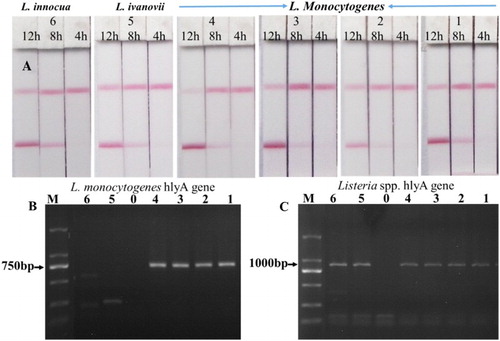Figures & data
Figure 1. Scheme of the P60 mAbs-based gold nanoparticle-based paper sensor for multiple detection of 12 Listeria spp.
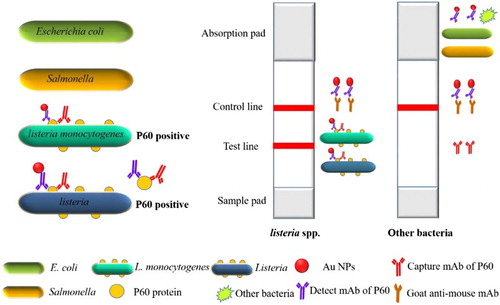
Figure 2. (a) Typical TEM image of the synthetized 15 nm AuNPs. (b) UV–VIS spectra of the AuNP- and the mAb-labeled AuNPs.
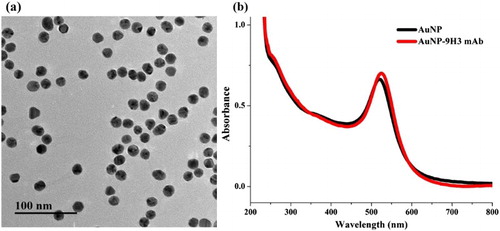
Figure 3. (a) SDS-PAGE of the purified P60 protein. 1, P60 protein (0.3 mg/mL); 2, P60 protein (0.15 mg/mL). (b) Gold nanoparticle-based paper sensor for detection of the P60 protein.
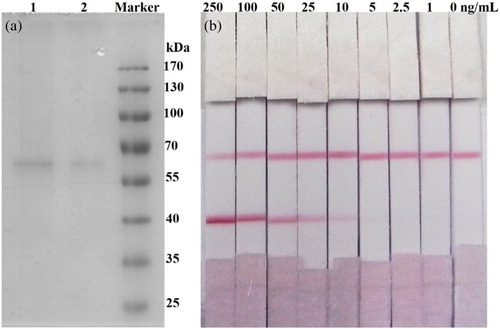
Figure 4. Gold nanoparticle-based paper sensor for detection of eight strains of L. monocytogenes (a), four strains in the genus of Listeria (b), and the gray values of the test line for each test (c).
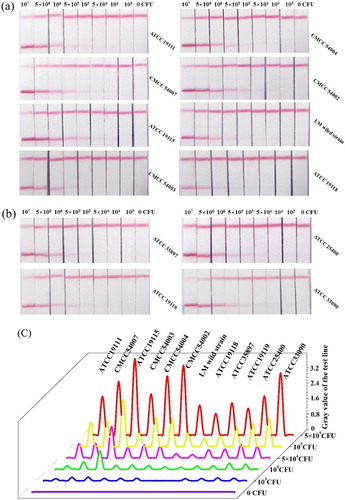
Figure 5. Cross-reactivity of the gold nanoparticle-based paper sensor with S. aureus, E. coli O157:H7, S. typhimurium, E. coli, C. sakazakii, C. jejuni, C. coli, L. plantarum and B. subtilis. The tested concentration was all at 2 × 108 CFU/mL.
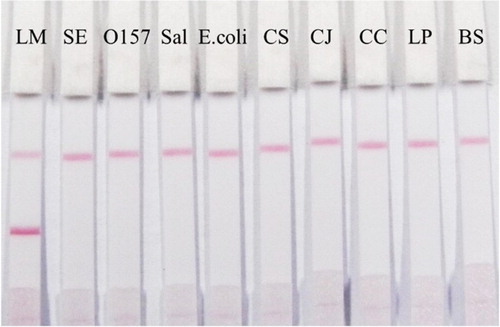
Figure 6. (a) Detection of the spiked milk sample of Listeria spp. after 4, 8, and 12 h enrichment. Number 1–6: ATCC 19111, ATCC 19115, ATCC 19118, CMCC 54002, ATCC 19119, ATCC 33090, respectively. Agarose gel analysis of the PCR product with the L. monocytogenes primers (b) and the Listeria spp. primers (c). Number 0–6: negative control, ATCC 19111, ATCC 19115, ATCC 19118, CMCC 54002, ATCC 19119, ATCC 33090, respectively.
